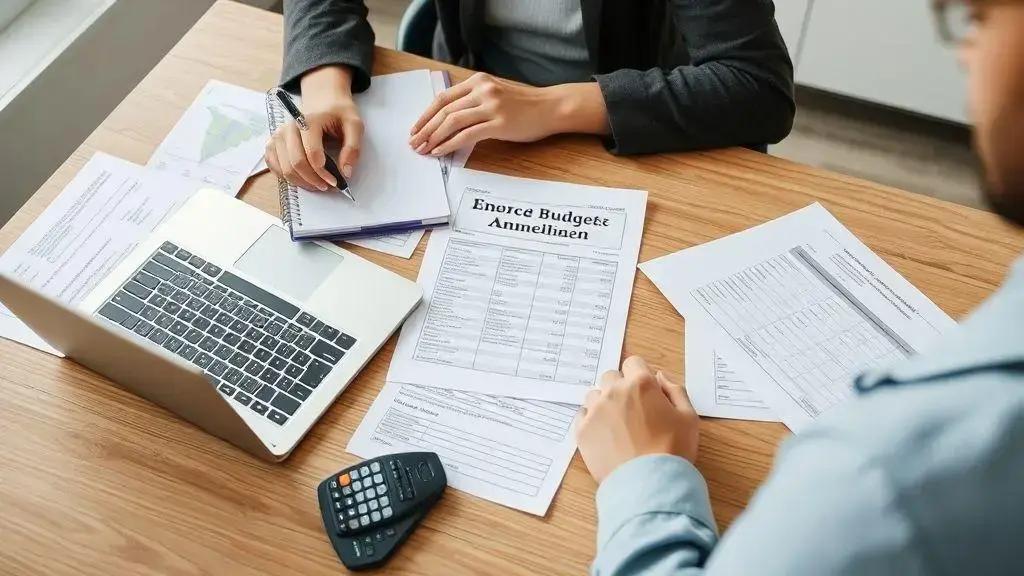Strategies for reducing credit card debt effectively

Strategies for reducing credit card debt include creating a debt repayment plan, using balance transfers wisely, and implementing effective budgeting techniques to prioritize payments and lower overall interest costs.
Strategies for reducing credit card debt can be life-changing for many people. Have you ever felt overwhelmed by monthly payments? In this article, we’ll dive into effective ways to tackle your credit card bills and regain financial peace of mind.
Understanding credit card debt
Understanding credit card debt is essential for anyone looking to manage their finances better. It can feel overwhelming, but grasping the basics can help you regain control.
When you use a credit card, you borrow money that you must repay, often with interest. The interest rates on credit cards can be quite high, making it easy for debt to accumulate quickly. If you don’t pay your balance in full each month, interest charges can snowball, leading to larger debts.
Types of Credit Card Debt
There are a few different types of debts that can accumulate on your credit card:
- Revolving debt – This is the most common type, where you carry a balance from month to month.
- Installment debt – Some cards offer options to finance large purchases with fixed payments.
- Cash advances – This allows you to take cash out using your credit card, often with high fees and interest.
The effects of high interest rates can be significant. When looking at your monthly statement, you may notice that a large portion goes to interest. This can prevent you from effectively paying down your principal balance.
Why People Accumulate Credit Card Debt
Many individuals find themselves in credit card debt due to various reasons. Some common factors include overspending, emergencies, or unexpected expenses. It’s crucial to recognize your spending habits and identify areas for improvement.
For example, if you often buy items on impulse, consider setting a budget. Use this budget to limit your purchases. This approach can prevent you from falling into the trap of continued debt accumulation.
Additionally, understanding your debt is the first step toward financial freedom. Knowing how much you owe, your interest rates, and your payment terms is vital. This knowledge will help you create an effective repayment plan.
Lastly, seek help when needed. Financial advisors can provide valuable insights on managing and reducing your debt. Don’t be afraid to reach out!
The impact of high interest rates
The impact of high interest rates on your credit card debt can be significant. When you’re not paying off your balance each month, those rates can make it seem impossible to get out of debt.
Many credit cards come with high annual percentage rates (APRs), often exceeding 20%. This means that if you only pay the minimum amount due, you’ll pay a large sum in interest over time. Each month, a portion of your payment goes to the interest rather than the principal balance.
Consequences of High Interest Rates
High interest rates can lead to several negative outcomes:
- Increased overall debt – Your balance can quickly grow if you only make minimum payments.
- Longer repayment periods – More time is required to pay off debt because of the added interest.
- Reduced financial flexibility – The more you pay in interest, the less money you have for other expenses.
These consequences can affect your financial stability and make it harder to achieve your goals. It’s crucial to understand your card’s APR and work towards payments that can reduce your balance faster.
To manage high interest effectively, consider strategies like negotiating lower rates with your credit card company or seeking alternatives like balance transfers to lower-interest cards. Both methods can mitigate the burden of high interest rates and help regain control.
Being aware of the impact of high interest rates can serve as a motivator. Avoiding unnecessary purchases using credit can also limit the amount of debt you accumulate. Focus on using cash or debit for everyday expenses to keep your credit utilization low.
Budgeting techniques to pay down debt

Budgeting techniques to pay down debt can make a significant difference in your financial situation. By planning your expenses carefully, you can find ways to allocate more money towards paying off your credit card debt.
One effective technique is to start by tracking your expenses. Knowing where your money goes each month is crucial. This allows you to identify unnecessary expenses that can be reduced or eliminated.
The 50/30/20 Rule
The 50/30/20 rule is a popular budgeting approach:
- 50% of your income goes to needs, such as housing and groceries.
- 30% is for wants, like entertainment and dining out.
- 20% should be allocated to savings and debt repayment.
By applying this rule, you can set aside a dedicated portion of your income specifically for paying down your credit card debt.
Create a Debt Snowball Plan
Another useful technique is the debt snowball method. This approach involves focusing on the smallest debts first while making minimum payments on larger debts. Once the smallest debt is paid off, you can use that money to tackle the next one. It can help build momentum and motivation as you see debts being eliminated.
Additionally, consider cutting back on non-essential spending as part of your budgeting strategy. For instance, if you usually buy coffee or eat out frequently, reducing these expenses can free up valuable cash for debt payments.
Using financial apps or spreadsheets can also simplify budgeting. These tools help track expenses and visualize where your money is going. With clear insights, you can adjust your budget to prioritize debt repayment effectively.
Using balance transfers wisely
Using balance transfers wisely can be a powerful strategy for managing credit card debt. By transferring high-interest balances to a lower-interest credit card, you can save money and pay down your debt more effectively.
The first step is to identify credit cards that offer balance transfer promotions. Many cards provide introductory periods with 0% interest for several months. This can give you extra time to pay off your debt without accruing new interest.
Benefits of Balance Transfers
There are several benefits to using balance transfers:
- Lower interest rates – This can reduce the total amount you pay over time.
- Consolidation of debt – Combining multiple debts into one payment simplifies your finances.
- Improved cash flow – With lower monthly payments, you may free up more money for essential expenses.
However, it is important to read the terms carefully. Some cards charge balance transfer fees, and if you don’t pay off the balance before the promotional period ends, interest rates may jump significantly.
To maximize the benefits of a balance transfer, create a clear repayment plan. Set a goal for paying off the transferred balance before the promotional period lapses. Consider making higher monthly payments during this time to reduce the balance more quickly.
Additionally, avoid accumulating more debt on your old card after a transfer. This can lead to a cycle of debt where you are still paying off old balances along with new charges. Instead, focus on using cash or a debit card for purchases while you work on paying down your balance.
Building a debt repayment plan
Building a debt repayment plan is essential for anyone struggling with credit card debt. A clear plan can help you stay organized and motivated as you work towards financial freedom.
Start by listing all your debts. Include the total amount owed, the interest rate, and the minimum monthly payment for each one. This will give you a comprehensive view of your financial situation. Prioritize your debts based on interest rates. Focus on paying off high-interest debts first while making minimum payments on others.
Establish a Budget
Next, create a monthly budget that aligns with your repayment goals. Allocate funds specifically for debt repayment. Here’s how you can do it:
- Track your income – Know how much money comes in each month.
- Identify expenses – Categorize your spending into needs and wants.
- Set limits – Cut unnecessary expenses to free up cash for debt payments.
Using this budget, determine how much extra you can put toward your debts each month. When payments increase, you can pay off debts faster.
Choose a Repayment Strategy
Selecting a repayment strategy is crucial. The two most popular methods are:
- Debt Snowball – Pay off the smallest debts first for quick wins.
- Debt Avalanche – Focus on the debts with the highest interest rates first to save money in the long run.
Whichever method you choose, stick to your plan. Consistency is key! Adjust your budget and strategy as necessary, but always keep your repayment goals in focus.
Additionally, consider setting up automatic payments for your debts. This ensures you never miss a payment and helps you stay on track with your progress. Remember, every small step counts.
In conclusion, reducing credit card debt is possible with the right strategies and mindset. By understanding your debt, creating a solid plan, and using budgeting techniques effectively, you can take control of your financial situation. Remember to look for balance transfer opportunities and focus on your repayment strategies. With determination and discipline, you can become debt-free and achieve your financial goals!
FAQ – Frequently Asked Questions about Strategies for Reducing Credit Card Debt
What are the benefits of creating a debt repayment plan?
A debt repayment plan helps organize your payments, prioritize debts, and keep you motivated to reach your financial goals.
How can I effectively use balance transfers?
Balance transfers allow you to move high-interest debt to a lower-interest card, saving you money and helping you pay off your debt faster.
What budgeting techniques can help manage my finances?
Using methods like the 50/30/20 rule or tracking all expenses can help you allocate funds wisely and prioritize debt repayment.
How does the debt snowball method work?
The debt snowball method focuses on paying off the smallest debts first, giving you quick wins that can boost your motivation to tackle larger debts.





